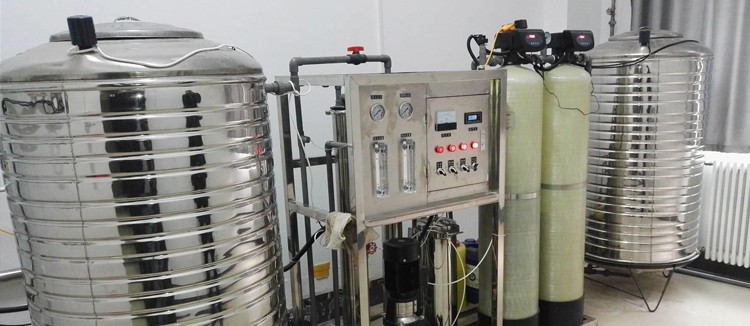
Cleaning Method Of Reverse Osmosis Device
Reverse osmosis technology has been widely used because of its special advantages. The cleaning problem of reverse osmosis water purification equipment may cause many users with weak technical strength to suffer losses, so it is necessary to do a good job in the management of reverse osmosis equipment to avoid serious problems.
1. Low-pressure flushing reverse osmosis device
Regular flushing of the reverse osmosis device with high flow, low pressure, and low pH is helpful to strip off the dirt attached to the membrane surface and maintain the membrane performance, or when the reverse osmosis device feed water SDI suddenly rises above 5.5, you should Carry out low-pressure flushing, and turn on the machine after the SDI value is adjusted to a qualified level.
2. Outage protection of reverse osmosis device
Due to production fluctuations, reverse osmosis devices inevitably have to be shut down frequently, and protective measures must be taken when short-term or long-term shutdowns. Improper handling will result in membrane performance degradation and irreversibility.
Short-term storage is suitable for systems that are out of service for less than 15 days, and the method of low-pressure flushing every 1 to 3 days can be used to protect the reverse osmosis device. It has been found in practice that when the water temperature is above 20°C, the water in the reverse osmosis device will become smelly and deteriorate when stored for 3 days, and a large number of bacteria will multiply. Therefore, it is recommended that when the water temperature is higher than 20℃, low-pressure flushing once every 2d or 1d; when the water temperature is lower than 20℃, low-pressure flushing once every 3d is recommended. After each flushing, all inlet and outlet valves on the reverse osmosis device of the water purification equipment should be closed. .
Long-term shutdown protection is suitable for systems that are out of service for more than 15 days. At this time, protection liquid (bactericide) must be filled into the reverse osmosis device of the water purification equipment for protection. The commonly used bactericide formula (composite film) is formaldehyde 10 (mass fraction), isothiazolinone 20mg/L, and sodium bisulfite 1 (mass fraction).
3. Chemical cleaning of reverse osmosis membrane
Under normal operating conditions, reverse osmosis membranes may also be contaminated by inorganic scales, colloids, microorganisms, metal oxides, etc. The deposition of these substances on the membrane surface will cause the output of the reverse osmosis device of the water purification equipment to decrease or the desalination rate to decrease, and the pressure difference It may even cause irreversible damage to the membrane. Therefore, in order to restore good water permeability and salt removal performance, the membrane needs to be chemically cleaned.
Generally, it is cleaned once every 3 to 12 months. If it has to be cleaned once a month, it indicates the pretreatment system that should be improved and the operating parameters to be adjusted. If it needs to be cleaned once every 1 to 3 months, the operation level of the equipment needs to be improved, and it is difficult to judge whether the pretreatment system needs to be improved.
